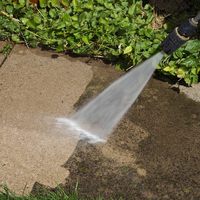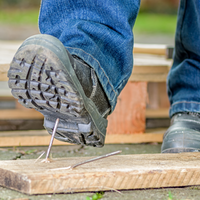You may be cleaning wrong: tips from a scientist
Spring cleaning has taken on a new meaning since COVID-19, even as vaccines steadily roll out around the world. We’ve bought cleaning sprays in bulk, ready to protect our homes from germs and other microbes. We’re on the cusp of regular outings and invitations to others’ homes. The only problem?
“Many of us are cleaning wrong,” said Tom Portelli, a senior application engineer in 3M’s Home Care Division. “People tend to use the terms ‘clean, disinfect and sanitize’ interchangeably when in reality, each level may require a different product and may have very different effects on the surfaces in your home.”
In anecdotal conversations with customers, 3M found that the average consumer may not actually be achieving disinfection in many cases. Unfortunately, a “spray and immediately wipe” technique doesn’t do much more than remove visible debris on a surface or countertop. So, it’s important to get some spring-cleaning terminology squared away:
- Clean: The removal of visible debris from surfaces
- Sanitize: An agent that reduces the number of bacteria and other microbes by 99.9% when used as directed on the product label.
- Disinfectant: a chemical agent that destroys 99.9999% of microorganisms including disease-causing pathogens (potentially including COVID-19) when used as directed on the product label.
Once vaccines are more ubiquitous, and there’s increased traffic in and out of your home, you’ll want to make sure you’re effectively minimizing the risk of surface contaminants. Here’s how:
First, clear away visible surface debris (e.g. crumbs, dust, etc.) with a non-scratch scouring sponge like this Scotch-Brite® Sponge to scrub and wipe the surface clean.
Next, choose an appropriate disinfecting spray: look at the label to make sure it has been registered by the US EPA as effective against viruses. There will be an EPA Reg. No. on any product label that has been properly registered with the US EPA and a list of viruses will be included on the label that the product is effective against.
“Here’s another very important detail people may miss if they aren’t following the label directions to properly disinfect their area,” said Portelli. “It is important to understand the disinfectant’s required ‘dwell time’, or the time the liquid solution needs to sit on the surface in order for it to actually disinfect.”
The average dwell time can be up to several minutes or more, so it’s important to look at the label to determine what dwell time the product requires.
“Many may skimp on the amount of disinfectant,” Portelli adds. “In order to fully disinfect, the surface area must be completely saturated. Two or three pumps of the bottle won’t cut it.”
After the fully saturated dwell time is up, use a microfiber cloth to wipe up all the disinfectant.
“It’s only after following these steps that the surface would be thoroughly cleaned and disinfected,” said Portelli. “These are simple but important practices that will help protect yourself and others around you as we happily inch our way back towards normalcy.”














